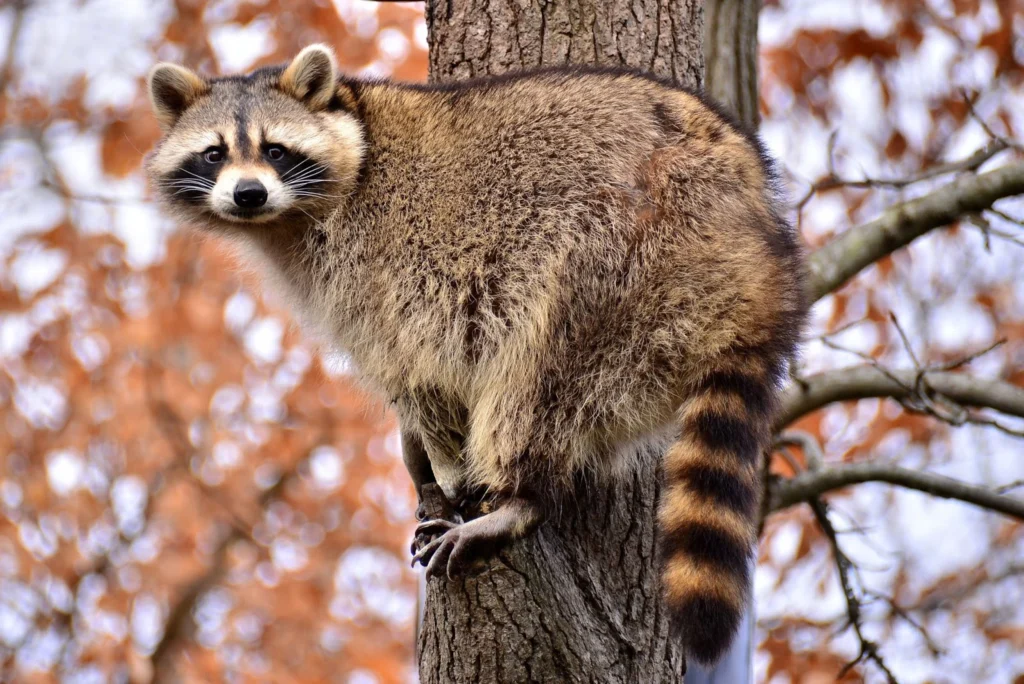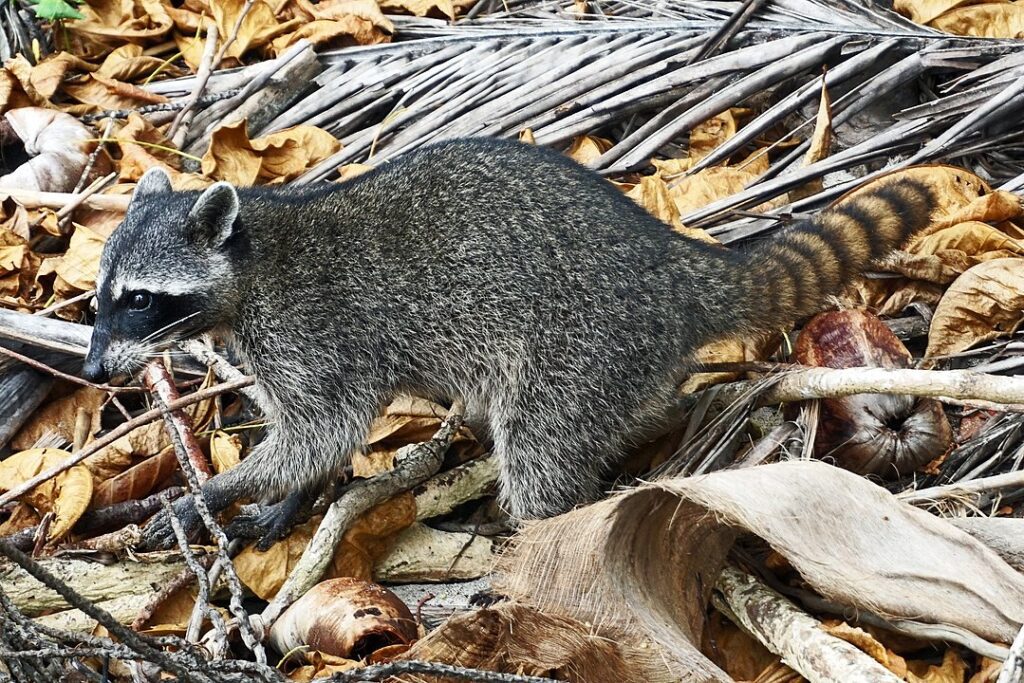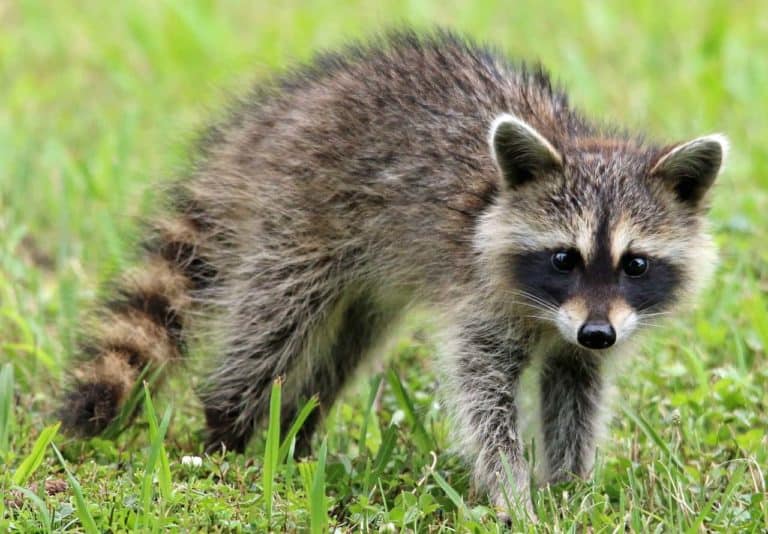Welcome to BungeeCity.com, where we take you on a wild adventure into the fascinating world of raccoons! Get ready to uncover the secrets of these mischievous masked critters and discover the different species that roam our planet. From their clever antics to their adorable appearances, raccoons have captured our hearts and piqued our curiosity. So, let’s dive right in and embark on a journey to meet the “real” raccoons and their quirky relatives, the coatis. Along the way, we’ll also explore raccoon populations from a global perspective, shedding light on their widespread presence. Get ready for a raccoon rendezvous like no other!
The Intriguing World of Raccoons
Peek behind the veil, and you’ll find the world of raccoons to be a rich tapestry of diversity and intrigue. These creatures, often simply associated with late-night raids on our garbage cans, are significantly more complex and fascinating than we give them credit for.
Check out: Read more: What Eats Raccoons? Discover the Top 12 Predators That Hunt Raccoons
With seven distinct species within the raccoon family and their raccoon-like kin, there’s a surprising range of forms and behaviors to explore. These creatures are not just the adorable, mask-wearing, ring-tailed furballs we’re familiar with. They come in various sizes, shapes, colors, and each species carries its unique charm and quirks.
| Species | Size | Color | Unique Features |
|---|---|---|---|
| Common Raccoon | 40-70 cm | Grey or Brown | Black mask and rings on tail |
| Coati (Raccoon Relative) | To Be Discussed | To Be Discussed | To Be Discussed |
The common raccoon, sometimes referred to as the Procyon, is the largest member of this captivating family. It’s named after the genus it belongs to, which intriguingly translates to “before the dog” or “doglike”. This generalist carnivore shares its family with other fascinating creatures like dogs, bears, skunks, and martens.
But how many of these captivating creatures are there in the world? Exact numbers are challenging to pin down due to their elusive behavior and widespread distribution. However, estimates suggest there could be over 6 million raccoons globally, each contributing to the vibrant tapestry that is the raccoon world.
Also check out: Leopard vs. Cougar: What Makes Them Different and Who Prevails in a Battle?
As we journey deeper into this realm, we’ll take a closer look at each species, unraveling their unique characteristics and behaviors. So, buckle up and let’s embark on this fascinating journey of discovery into the types of raccoons.
Meet the “Real” Raccoons
Did you know that there are several species of raccoons out there, each with its unique characteristics? Among the seven species identified, three are considered the “real” raccoons that belong to the Procyon genus. These include the Northern Raccoon, Eastern Raccoon, Mexican Raccoon, and the Upper Mississippi Valley Raccoon. However, the most frequently spotted and widespread is the North American raccoon, also known as the common raccoon or Procyon lotor.
Procyon Lotor: The North American Raccoon

procyon lotor
Imagine a creature stepping out from the shadows on a moonlit night, its black mask and bushy tail with distinct black rings catching your eye – that’s the common raccoon for you. This species, with its iconic black mask across its eyes, is a familiar sight across North America. But there’s more to these creatures than just their appearance.
The North American raccoon, or Procyon lotor, stands out not just for its distinctive looks but also for its size. These creatures can be as short as 40 centimeters or as long as 70 centimeters, and their weight varies significantly, ranging from a light 5 kg to a hefty 26 kg. Factors such as age, genetics, environment, and food availability influence their size. Urban raccoons, for instance, are often larger than their rural counterparts – the result of a plentiful supply of pet food and rubbish!
For more similar posts check out: What Eats Tigers? Discover the Top Predators That Prey on Tigers as well as Are Lions Friendly or Fierce? Unveiling the Truth about Their Nature and Interaction with Humans
So, the next time you observe a raccoon, remember that it’s not just any raccoon. It might be the common raccoon, a member of the “real” raccoon species, living its life in the concrete jungles or the lush green forests of North America.
Coming up next, we’ll delve into the world of other raccoon species that might not be as common but are just as fascinating. Stay tuned!
Discovering Other Species of Raccoons
As we delve deeper into the world of raccoons, we find that these creatures are as diverse as they are fascinating. While the common raccoon, the Procyon lotor, might be the one that comes to mind most readily, there exists a myriad of other species that each carry their unique charm and intrigue.
The Crab-Eating Raccoon: A Tropical Marvel

crab eating raccoon
For instance, the crab-eating raccoon (Procyon cancrivorus), is a species that has adapted to a very different lifestyle compared to its North American cousin. Its name is a direct hint towards its diet, the crab-eating raccoon thrives in the tropical regions of Costa Rica and parts of South America. Despite sharing the raccoon family tree, this species is noticeably leaner and smaller, a testament to its tropical roots and crab-filled diet. This delightful creature, with its slender form and agile nature, serves as a captivating contrast to the larger Procyon lotor.
Cozumel Raccoons: The Pygmy Raccoons

cozumel raccoons
Now, imagine a raccoon so small, you could cradle it in your arms. That thought brings us to the Pygmy raccoons, also known as Cozumel raccoons. These miniature marvels, with a weight range of 1.4 to 4.5 kg and a body length of 40 centimeters, are the tiniest members of the raccoon family. Found exclusively on the island of Cozumel in Mexico, they stand as an example of island dwarfism, a biological phenomenon where the size of species on an island decreases over time due to resource limitations and absence of predators.
While their size may be small, their charm is immense. Their reddish-brown fur and black mask echo the classic raccoon look, serving as a delightful reminder of their larger relatives. Though their population is limited, their presence adds a touch of magic to the biodiversity of Cozumel.
Check out: What Does Raccoon Poop Look Like? A Complete Guide to Raccoon Scat Identification
Through these species, we see the versatility and adaptability of raccoons as a whole. Whether they’re feasting on crabs in the tropical rainforests of Costa Rica or navigating the confines of the small island of Cozumel, raccoons continue to thrive and surprise us with their incredible diversity.
Join us as we continue our exploration in the next section, where we introduce you to a fascinating relative of the raccoon family – The Coati.
The Coati: A Raccoon Relative and its Remarkable South American Journey
As we traverse the lush landscapes of the Americas, exploring the fascinating world of raccoons, we encounter a distinctive species that shares the same family tree as our masked friends – the South American coati. This intriguing creature, known scientifically as Nasua nasua, is a part of the Procyonidae family, making it a close relative of the raccoon.
Distinct from its northern cousin, the white-nosed coati, the South American coati boasts a more variegated and complex color palette. It lacks the fully white snout that characterizes its relative but compensates with an array of colors that blend harmoniously with the tropical and subtropical habitats it calls home. This unique feature adds an element of mystery to its appearance, reflecting the extraordinary biodiversity of South America.
Read more: Unveiling the Secrets of a Lion’s Tongue: All You Need To Know
As an omnivore, the South American coati’s diet is a testament to its adaptability and survival instincts. From juicy fruits, scampering insects, bird eggs to other small creatures, this versatile feeder is well equipped to take advantage of its environment’s plentiful resources. Its snout, long and flexible, is an essential tool in its culinary pursuits, helping it to sniff out potential meals hidden beneath the surface or in the tree canopies.
The South American coati is an arboreal creature as much as it is terrestrial. It effortlessly navigates both the ground and the treetops in its quest for food and shelter. This characteristic further demonstrates the coati’s remarkable adaptability, a trait it shares with its raccoon relatives, and their collective ability to thrive in diverse habitats, from the tropical rainforests of the Amazon to the urban jungles of North America.
Ultimately, the South American coati embodies the spirit of the raccoon family, showcasing the resilience, adaptability, and diversity that typify this remarkable group of mammals. As we continue our exploration into the world of raccoons in the subsequent sections, let’s bear in mind the South American coati and the valuable lessons it offers about the intricate web of life in the animal kingdom.
Raccoon Populations: A Global Perspective
From the verdant backyards of North America to the tranquil forests of Japan, the adaptable raccoon has carved out a home in various corners of our world. Let’s embark on an exploration of their global presence, understanding the conservation status of these fascinating creatures, and discovering the pressing concerns threatening their survival.
Picture this: night has fallen, and the suburbs are awash in the gentle glow of streetlights. Among the rustling leaves, a pair of bright eyes peeps out. It’s a common sight in the United States, where raccoons have become an integral part of the urban landscape. The raccoon population here is staggering, boasting of an estimated figure over 6 million.
But the raccoon’s domain doesn’t end at the US borders. The North American raccoon population spans across the continent, with numbers fluctuating between 5,000,000 and 10,000,000. This isn’t a surprising number, considering the raccoon’s adaptability and opportunistic nature. They thrive in diverse habitats, from coastal marshes to mountainous areas, making North America a thriving raccoon metropolis.
Check out: How Strong Are Orangutans? Discover Their Astonishing Power!
When we expand our view globally, the raccoon population might reach an astounding 20,000,000. That’s a testament to the raccoon’s resilience and adaptability. However, not all species share this prosperous state.
While the common raccoon thrives, some of its lesser-known cousins face the harsh reality of survival. The Pygmy raccoon, for example, is listed as severely endangered by the IUCN. Their numbers are heartbreakingly low, with potentially less than 250 mature individuals left in the wild.
The IUCN, the International Union for the Conservation of Nature, estimates that there are only 323 to 955 pygmy raccoons left in their sole habitat – the picturesque island of Cozumel. This stark contrast to their common cousins underlines the importance of continued and focused conservation efforts.
Check out: What Eats an Alligator? Discover the Top 12 Predators That Prey on These Mighty Reptiles
So, as we traverse the world, admiring the diversity and adaptability of the raccoon family, let’s not forget the smaller, lesser-known species who are fighting a tough battle for survival. Their struggle reminds us of our responsibility to preserve and protect the world’s biodiversity for future generations to appreciate.
Unveiling the Extraordinary Diversity of Raccoons
When we think of raccoons, the image that often comes to mind is that of the common raccoon – a nocturnal, masked creature known for its crafty antics. However, the raccoon family is a fascinating kaleidoscope of species, each with its distinct characteristics and special adaptations that highlight the incredible biodiversity of our planet.
Read more: Are You Prepared? Here’s What You Need To Do if a Raccoon Bites You
Take, for instance, the Pygmy Raccoon (Procyon Pygmaeus), a petite variant also known as the Cozumel raccoon. This species, the fifth of its kind on the island, is a stark contrast to its larger counterparts. Its diminutive size and endangered status serve as a poignant reminder of our responsibility towards the conservation of these remarkable creatures.
Contrastingly, the Crab-Eating Raccoon (Procyon cancrivorus) displays a unique dietary preference, living up to its name by feasting on crabs. Native to the tropical regions of Costa Rica and South America, this species reveals the adaptability of raccoons to various habitats and food sources.
Intriguingly, our exploration of raccoon diversity would be incomplete without mentioning the South American Coati (Nasua nasua). This raccoon relative, with its long snout and ringed tail, offers yet another glimpse into the rich tapestry of species within the Procyonidae family.
Read more: Are Raccoons Rodents? Unveiling the Truth Behind Their Classification
Every species of raccoon, from the common to the exotic, from the smallest Pygmy to the tropical crab-eating raccoons, and including the raccoon relatives like the South American coatis, contributes to the vibrant biodiversity of our world. They are all parts of a grand ecological jigsaw that we are only beginning to understand. The more we discover about these fascinating creatures, the more we realize the importance of preserving their habitats and ensuring their survival for future generations to marvel at and learn from.
There are seven recognized species of raccoons and raccoon-like animals.
Three species, including the Northern Raccoon, are considered the “real” raccoons in the genus Procyon.
The most common species of raccoon in North America is the Northern Raccoon, also known as Procyon lotor.
Other species of raccoons include the Eastern Raccoon, Mexican Raccoon, Upper Mississippi Valley Raccoon, crab-eating raccoon, pygmy raccoon, and Coati.

